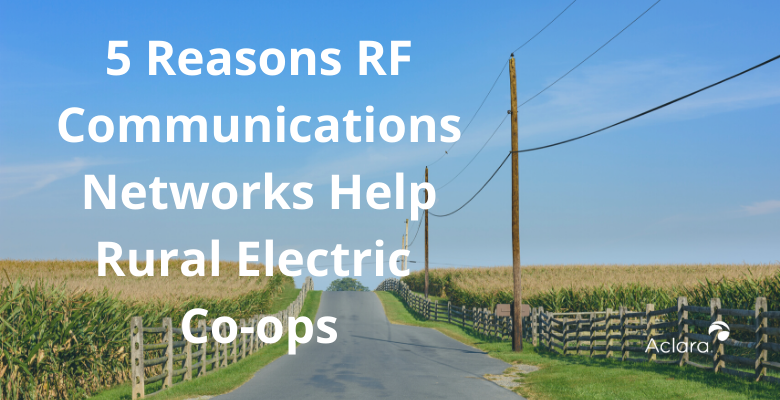Implementing advanced metering infrastructure using wireless RF-based networks poses special challenges for rural electric cooperatives. Many cooperatives stretch across thousands of miles, with great distances between individual meters and groups of meters. This fact may make it difficult to cost-effectively implement RF networks that deliver data consistently since these systems require equipment and infrastructure distributed throughout the service area to operate.
Today, most cooperatives with AMI use solutions that work over power lines, eliminating the need for additional infrastructure, except for substation equipment that collects and processes meter data. However, there are restrictions on the amount and types of data powerline-based systems can process, although new developments minimize them. (Read more on how Aclara is increasing the versatility of power line communication systems in The Future of Power Line Communication, Electric Energy T&D, May 2017.)
Even so, more rural electric cooperatives are considering RF-based networks for AMI. The Guadalupe Valley Electric Cooperative (GVEC), for example, recently awarded Aclara an advanced metering infrastructure (AMI) project that will employ our Synergize® RF-based metering network system.
The near-real-time data collected by the system will enable the utility, which spans 3,500 square miles across 13 counties in South Central Texas, to bring back the data it needs to quickly identify and isolate the causes of power outages, determine the effect of bi-directional power flow on operations and monitor the true voltage going into homes.
Why Co-ops Need RF for AMI
 Controlling the Distribution Network – RF networks allow utilities to monitor voltages at meters, power transformers and substations on the low-power side of the distribution network. This gives the utility added flexibility in managing its distribution network, allowing better control of voltages at transformers and substations with fewer negative effects on the system
Controlling the Distribution Network – RF networks allow utilities to monitor voltages at meters, power transformers and substations on the low-power side of the distribution network. This gives the utility added flexibility in managing its distribution network, allowing better control of voltages at transformers and substations with fewer negative effects on the system- Handling Outages – The real-time data on voltages and blink counts (a measure of electricity usage), along with “last-gasp” signals from meters, can be relayed directly into outage management systems, providing the data utilities need to proactively resolve outages – sometimes before they are even reported by customers.
- Supervising Asset Deployment – The precise data provided by RF networks on the extent of outages helps utilities plan the dispatch of repair crews, a significant benefit in reducing the amount of time customers are out of power.
- Managing Peak Demand – RF electric systems like Synergize RF can provide data in small intervals, down to five minutes, allowing utilities to collect the data they need to calculate peak demand and time-of-use real-time consumption rates.
- Preparing for Distributed Energy – According to the U.S. Energy Information Administration, renewables account for almost 15% of the power generated in the U.S. As solar and wind power become more a part of the utility landscape, utilities must prepare for the effects these distributed resources have on the grid. RF can handle distributed power generation by allowing utilities to manage power being delivered back to the utility as well as that being delivered to customers.
The Benefits of Aclara RF Electric
The Aclara RF™ Electric network is a point-to-multipoint system with a number of advantages for rural electric cooperatives.
First and foremost, as a point-to-multipoint system that communicates meter data directly to collectors rather than through meters, as mesh systems do, reducing the need for signal boosters or repeaters. The data collectors can be placed on existing assets.
Then, the system offers a high-redundancy rate so that 99.9% of all meter readings are picked up by a minimum of two, and in some cases three, data collectors. This ensures that the utility rarely misses a meter read, even if a data collector fails.
Finally, the AclaraONE® meter data management software from Aclara provides out-of-the-box integrations to customer information systems (CIS) and outage management systems. The integration to CIS allows on-demand reads right from the CIS, improving customer service by making it easier to investigate billing complaints and start and stop service. Plus, data going directly into the outage management system through the AclaraONE integration to the AMI, allows utilities to quickly assess outages and resolve them.
This blog was originally published in 2017 and was updated on July 14, 2020

